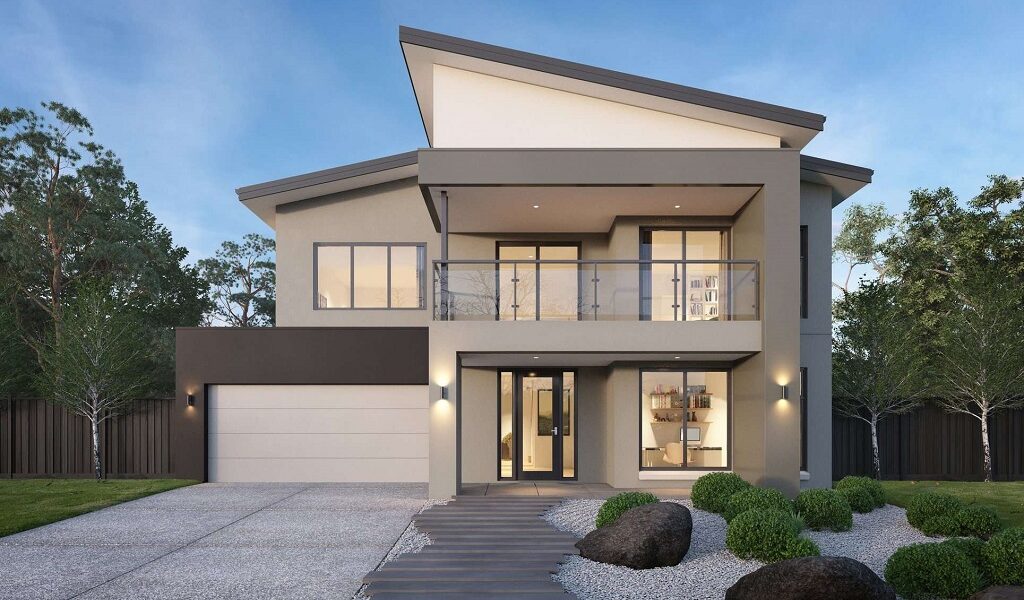5 Tips for Selecting the Best House and Land Packages
Thinking about buying a house and land package in Menangle Park? Wondering how to spot the difference between a genuine bargain and a potential headache? Are you curious about what makes some buyers absolutely love their decision whilst others end up with regrets?
You’re not alone in asking these questions. The house and land package market in Sydney has been buzzing with activity, and Menangle Park has emerged as one of the most sought-after locations for new homebuyers. With its perfect blend of rural charm and urban convenience, it’s no wonder families are flocking to this growing suburb.
This guide will walk you through five essential tips for selecting the best house and land packages in Menangle Park. You’ll learn how to research developers properly, understand the true costs involved, pick the perfect location for your lifestyle, evaluate home designs, and compare different packages effectively. Plus, we’ll share the common mistakes to avoid and give you a practical checklist to make your final decision with confidence.
Choose the Right Location for Your Lifestyle
Location remains the golden rule in real estate, and it’s especially crucial when selecting house and land packages. Your choice of location affects not just your property’s future value, but your daily quality of life for years to come. Menangle Park offers unique advantages, but different estates within the area cater to different lifestyles and priorities.
Consider your daily routine and long-term plans. Are you commuting to Sydney CBD or Parramatta? Do you have school-age children or planning to start a family? Will ageing parents need easy access to your home? These lifestyle factors should heavily influence which specific area you choose within Menangle Park.
The beauty of buying in a developing area like Menangle Park is watching the community grow around you. However, this also means doing your research on planned infrastructure and amenities. What seems isolated today might be a bustling neighbourhood hub in five years, whilst an area that looks convenient now might face congestion issues as development continues.
Why Menangle Park Is Attracting New Homebuyers
Menangle Park has captured buyers’ attention for several compelling reasons. Its position between Camden and Campbelltown offers the perfect balance – far enough from the city to enjoy space and tranquillity, yet close enough for a manageable commute. The area’s rural heritage gives it character that’s missing from many new developments.
The planned infrastructure improvements make Menangle Park particularly attractive for forward-thinking buyers. The Spring Farm Parkway connection and upgrades to Menangle Road will significantly improve access to major employment centres. Plus, with the Western Sydney Airport development, the entire region is set for economic growth.
Families especially love the community feel developing in Menangle Park. New schools are planned or recently opened, sports facilities are being built, and shopping centres are expanding. It’s becoming a self-contained community where you won’t need to travel far for daily necessities, yet you’re still within easy reach of Camden’s historic charm or Campbelltown’s major shopping precincts.
Comparing Willowdale and Emerald Hills House and Land Packages
Two of the most popular estates for house and land packages in the area are Willowdale and Emerald Hills, each offering distinct advantages. Willowdale has established itself as a premium community with larger blocks and strict design guidelines that protect your investment. The estate features beautiful parks, walking trails, and plans for a future village centre.
Emerald Hills house and land packages, on the other hand, appeal to buyers seeking modern convenience with a community focus. The estate offers a mix of lot sizes to suit different budgets and includes plans for a school, childcare centre, and local shops. Its position provides easy access to both the M31 and future Spring Farm Parkway.
When comparing these options, think beyond just price per square metre. Consider factors like elevation (for those district views), proximity to planned amenities, and the overall vision for each community. Visit both estates at different times of day and week to get a feel for traffic patterns and neighbourhood dynamics.
Essential Amenities to Consider
Your ideal location depends on which amenities matter most to your lifestyle. For families with young children, proximity to quality schools and childcare centres is usually non-negotiable. Check not just current schools but planned educational facilities, as these will be ready by the time your little ones need them.
Public transport options deserve careful consideration, especially if you’re a two-car household looking to potentially become one. While Menangle Park is primarily car-dependent now, check planned bus routes and consider proximity to Menangle or Macarthur stations for train access to Sydney.
Don’t overlook everyday conveniences like shopping centres, medical facilities, and recreational options. The new Coles at Menangle Village and expanded shopping at Mount Gilead mean you won’t need to travel far for groceries. However, for major shopping or entertainment, Macarthur Square in Campbelltown remains the closest major centre.
Evaluate the Home Design and Customisation Options
The design of your future home shapes how you’ll live in it every single day. While the block of land provides the canvas, the home design determines whether your space truly works for your family’s needs. Modern house and land packages offer impressive variety, but knowing how to evaluate these options makes all the difference.
Gone are the days when package homes meant boring, cookie-cutter designs. Today’s builders offer contemporary layouts with open-plan living, butler’s pantries, and home theatre rooms. However, the key is finding a design that matches your lifestyle rather than being swayed by impressive display homes that might not suit your actual needs.
Consider how your needs might change over time. That trendy galley kitchen might look stunning now, but will it work when you’re cooking for extended family gatherings? The home office tucked under the stairs seems efficient, but is it practical if you’re working from home full-time? Think long-term when evaluating designs.
Standard Inclusions vs Upgrades
Understanding what comes standard in your package versus what costs extra is crucial for budget planning. Most builders provide a detailed list of standard inclusions covering everything from tap fittings to tile allowances. Study these carefully – the difference between builders often lies in these details rather than the base price.
Standard inclusions typically cover basic but functional items. You’ll get carpet in bedrooms, tiles in wet areas, and basic tapware throughout. The kitchen usually includes laminate benchtops, a standard cooktop and oven, and basic cabinetry. These standards are perfectly liveable, but many buyers choose to upgrade at least some elements.
Popular upgrades include stone benchtops, higher ceiling heights, better insulation, and premium appliances. While these additions improve your living experience, they can quickly blow your budget. Prioritise upgrades that are difficult to change later, like ceiling heights or kitchen layouts, over cosmetic items you can update down the track.
Tips for Buying Land and Building a Home That Suits Your Needs
Smart buyers think about how their home will function in daily life. Start by listing your non-negotiables – maybe it’s a ground-floor bedroom for elderly parents or a triple garage for your boat. Then identify nice-to-haves you can compromise on if needed. This hierarchy helps when you’re making tough budget decisions.
Consider the orientation of your home on the block. North-facing living areas capture winter sun, reducing heating costs and creating naturally bright spaces. Think about privacy too – where will neighbouring houses sit, and how will this affect your outdoor entertaining areas? These factors significantly impact your enjoyment of the home.
Get specific about storage needs. One of the biggest complaints from new homeowners is lack of storage. Look for designs with walk-in linen cupboards, decent garage storage, and maybe even dedicated spaces for sports equipment or Christmas decorations. It’s much cheaper to include these in the build than to add them later.
Future-Proofing Your Investment
Building with the future in mind protects your investment and saves money long-term. Energy efficiency should be high on your priority list. Upgrading to better insulation, double-glazed windows, or solar panels during construction costs far less than retrofitting later and delivers immediate savings on power bills.
Consider technology infrastructure too. With more people working from home, proper data cabling and wifi coverage throughout the house is essential. Include provisions for electric vehicle charging in your garage – even if you don’t need it now, future buyers will expect it.
Think about accessibility as well. While you might be young and healthy now, designing with ageing in mind makes sense. Wider doorways, a step-free entrance, and reinforced bathroom walls for future grab rails cost little extra during construction but make your home suitable for all life stages.
Compare Different Package Types and Builders
Shopping around isn’t just about finding the lowest price – it’s about finding the best value for your specific situation. The Sydney house and land package market offers various options, from turnkey solutions to more flexible arrangements. Understanding these differences helps you make an informed choice.
Take your time with comparisons. Create a spreadsheet listing different packages with columns for price, inclusions, lot size, builder reputation, and build time. This systematic approach reveals patterns and helps you spot outliers – both amazing deals and suspiciously cheap offers that might indicate corners being cut.
Remember that cheapest isn’t always best value. A slightly more expensive package from a reputable builder with generous inclusions and a realistic timeline often works out better than a bargain option that leads to delays, disputes, and endless variation costs.
House and Land Packages vs Land Only Packages
The choice between buying a complete house and land package versus purchasing land only isn’t always straightforward. Complete packages offer convenience and certainty – one contract, one point of contact, and fixed pricing. They’re particularly attractive for first-time builders who appreciate the simplified process.
Land only packages give you more control but require more effort. You’ll need to find your own builder, manage the relationship between land developer and builder, and potentially deal with longer timeframes. However, this approach lets you choose exactly who builds your home and how it’s designed.
Financially, packages often work out cheaper due to developer relationships with builders and bulk pricing on materials. However, buying land separately sometimes allows you to secure a better block or negotiate harder on building costs. Consider your confidence level with project management when making this choice.
Understanding Sydney’s House and Land Package Market
Sydney’s market has unique characteristics that affect your buying decision. The city’s growth corridors, including the Menangle Park area, see intense competition among developers. This competition can work in your favour, with developers offering incentives like upgraded inclusions or contribution to stamp duty.
Timing matters in this market. New land releases often come with early bird incentives, but waiting can sometimes reveal better opportunities as developers need to move remaining stock. Stay informed about upcoming releases and market conditions through local real estate agents and developer newsletters.
Understanding Sydney’s building industry cycles helps too. Builders might offer better deals during traditionally slower periods or when they need to fill their pipeline. Conversely, during boom times, you might face longer build times and less negotiating power.
How to Compare Multiple Offers Effectively
Effective comparison goes beyond just looking at the bottom line. Start by ensuring you’re comparing apples with apples. A 250-square-metre home on a 450-square-metre block might seem comparable to another similar-sized package, but differences in design efficiency, block orientation, and included features can significantly affect value.
Create a scoring system that weights factors according to your priorities. If school proximity matters most, give that higher weighting than aesthetic features. Include both quantitative factors (price, size, inclusions) and qualitative ones (builder reputation, design appeal, location benefits) in your assessment.
Don’t hesitate to negotiate. Builders and developers expect it, particularly if you can demonstrate you’re comparing multiple options. Use competing offers as leverage, but be respectful and realistic. Focus negotiations on items that matter most to you, whether that’s upgraded inclusions, extended warranties, or contribution to landscaping costs.
Common Mistakes to Avoid When Buying House and Land Packages
Learning from others’ mistakes can save you considerable heartache and money. The most common error buyers make is falling in love with a display home without considering whether it suits their block or budget. Those magazine-worthy homes are designed to impress, often featuring every possible upgrade.
Another frequent mistake is underestimating timeframes. Builders quote construction times, but these don’t include delays from weather, material shortages, or council approvals. Add several months to any timeline you’re given and plan your living arrangements accordingly. Having realistic expectations prevents stress and financial pressure from extended rental periods.
Failing to read contracts thoroughly causes endless problems. Yes, they’re long and full of legal jargon, but understanding your contract prevents nasty surprises. Pay particular attention to clauses about variations, delays, and what happens if you need to make changes during construction.
Why Some Buyers Regret Their Purchase
Regret often stems from compromising on the wrong things. Buyers who stretch their budget too far find themselves house-rich but cash-poor, unable to enjoy their new home or handle unexpected expenses. Others compromise on location to get a bigger house, then spend years frustrated by long commutes or lack of amenities.
Poor research on builders leads to significant regret. Choosing based solely on price without investigating build quality, customer service, and warranty support often results in ongoing issues long after moving in. Structural problems, water ingress, or poor workmanship create stress that far outweighs any initial savings.
Some buyers regret not thinking about their home’s orientation until it’s too late. Living in a dark, cold house because all living areas face south, or dealing with western sun blazing into bedrooms every summer afternoon, serves as a daily reminder of poor planning.
The Importance of Independent Inspections
Never skip independent inspections, even with reputable builders. Professional building inspectors catch issues that untrained eyes miss. They check everything from frame alignment to waterproofing membrane installation. The few hundred dollars for inspections could save thousands in rectification works.
Schedule inspections at key stages: slab, frame, lockup, and practical completion. Don’t rely solely on the builder’s supervisor or council inspections – these focus on minimum compliance rather than build quality. Your inspector works for you and will identify both defects and quality concerns.
Document everything during inspections. Take photos, keep inspection reports, and maintain written records of any issues raised and how they’re resolved. This documentation proves invaluable if disputes arise later or when making warranty claims.
Conclusion
Selecting the perfect house and land package in Menangle Park doesn’t have to be overwhelming. By following these five essential tips – researching developers thoroughly, understanding all costs involved, choosing the right location, evaluating designs carefully, and comparing options systematically – you’re well-equipped to make a confident decision.
Remember, this isn’t just about buying a property; it’s about creating a home where you’ll build memories for years to come. Menangle Park offers an exceptional opportunity to be part of a growing community whilst enjoying the perfect balance of suburban comfort and rural charm. Whether you’re drawn to Willowdale’s premium appeal or Emerald Hills’ family-friendly focus, there’s a package that’s right for you.
The journey from searching through house and land packages to holding your new home’s keys requires patience, diligence, and smart decision-making. But armed with the knowledge from this guide, you’re ready to navigate the process successfully. Take your time, ask the right questions, and don’t let anyone pressure you into a decision you’re not completely comfortable with. Your perfect Menangle Park home is out there – now you know exactly how to find it.





